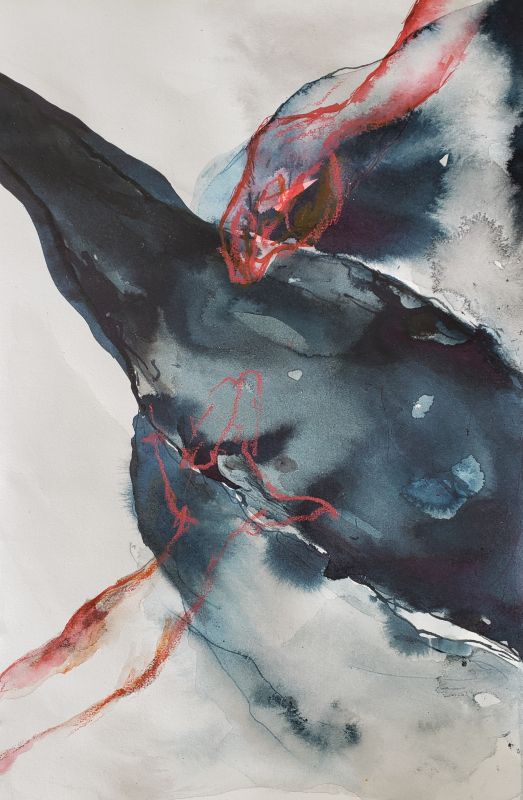 |
| Graphite drawing of view from my 9th floor Chicago apartment |
Given that I've been working from home for the last seven weeks, and only paid a brief visit to my studio dressed in mask and latex gloves to pick up more drawing materials, you would think I would have plenty time on my hands to write blog posts. Not just one blog post, but many more than my recent average, which has been more or less one post per week. But for some reason, I have found it rather difficult to summon up the will to write much. I've tried to make small paintings each day, or to draw for an hour, but not much more than that. I can't be the only person who has felt this strange inertia during a lockdown. Why is that, I wonder?
There are no doubt many reasons, many causes, for this. One that springs to mind is that I'm resisting making the adjustment to this new working pattern for writing or making art, even though I've made the adjustment for the freelance work that (thankfully) I am able to complete from home. I could blame the lack of space in the apartment that my wife and I inhabit, but that's only partially a reason. And I am getting on and doing things that aren't blogging. As I just said, freelance work is easy enough with a high speed internet connection, Zoom for online meetings, and so on. I am arranging an online artist' books class via an art center I work for, and that is a good and interesting challenge. And I am creating small pieces of art, such as the drawing above and this ink and crayon drawing:
But I've let more than a month pass by without adding anything to my blog, despite the reminders I see in my Google calendar. Is it that I don't get enough page views? That has never been a concern for me, as I have always treated the blog as a daily journal, a way to keep a record of my thoughts and actions that I can look back on much later, just like a traditional paper journal or diary, a means of charting my individual progression (or lack of it) over time. Is it that I feel I haven't had anything to say? That's partly it, consumed as I am, as I think many of us are, by the daily totals of people infected, people dying, politicians failing in their duty to protect and serve.
Here's one thing I remember from the many blogging classes that I taught: if you feel you can't do a blog post, there are a few suggestions to get past the block:
- Take a break and come back to it.
- Keep a doc file with a list of ideas that you can select from when you get the urge.
- Finally, at some point, just grit your teeth and force yourself to write something.
So I finally took my own advice from point three. Through gritted teeth, and with gradually relaxing fingers, I'm recording something in my blog. If you are reading this either on the blog itself or on another social media outlet, please feel free to tell me what you are doing to keep creating something, and/or the difficulties you find in sustaining your thoughts or your practice.
